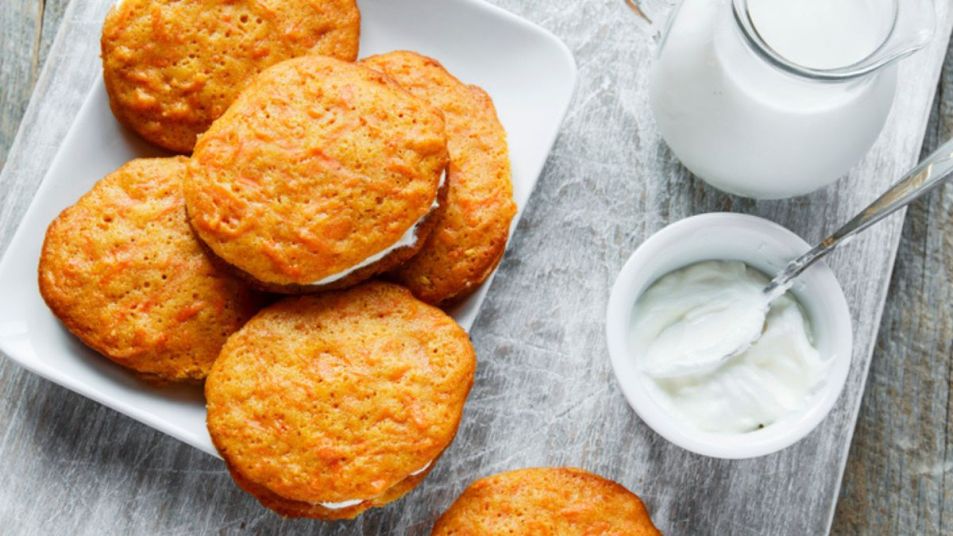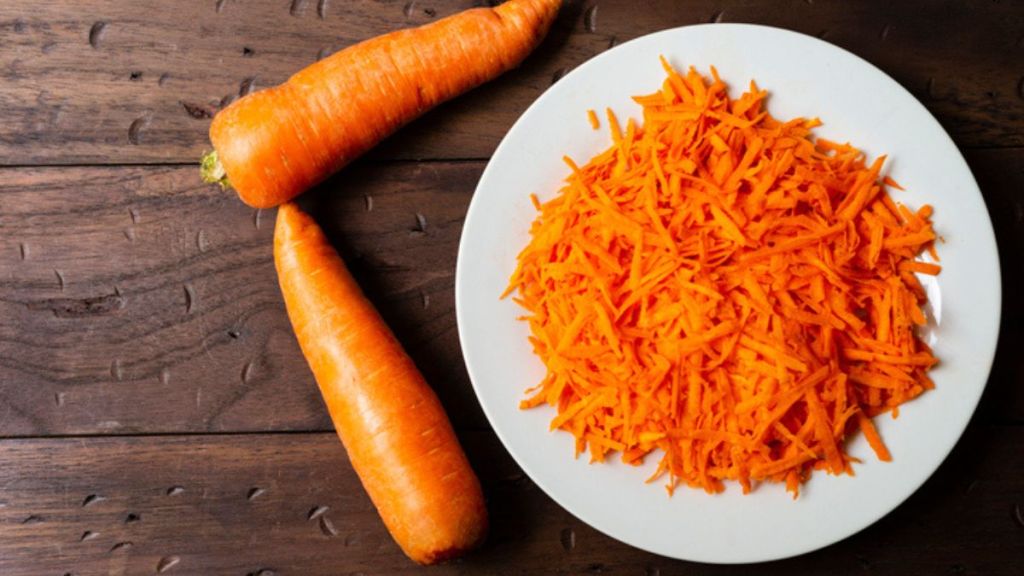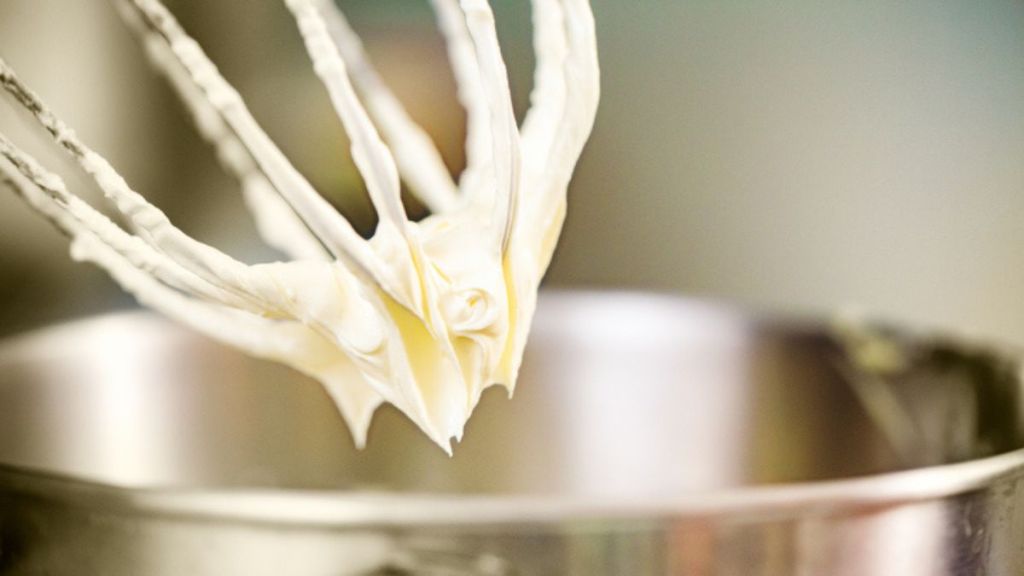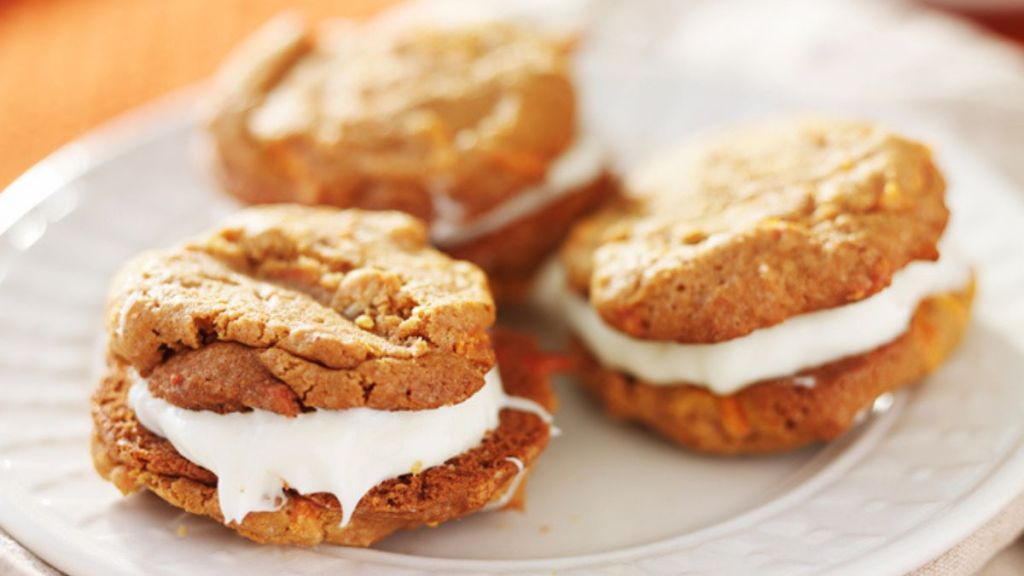Carrot Cake Cookies Combine 2 Treats in 1 Delicious Bite — Easy 30-Minute Recipe
Plus, learn how to grate carrots for the best texture.

Springtime calls for vibrant colors, fresh flavors and a dash of whimsy in the kitchen. And what better way to embrace the spirit of the season than with a batch of soft, chewy carrot cake cookies? Bursting with the sweetness of carrots and the warmth of cinnamon and nutmeg, these treats offer a playful twist on a classic dessert. Picture everything you love about carrot cake but now in handheld form. You can make this easy recipe for a picnic or a festive brunch in just 30 minutes. Plus, learn more about the nutritional benefits of carrots and how to grate them for the perfect texture. Keep reading for the ultimate guide to carrot cake cookies.
Ingredients in carrot cake cookies
Carrots lend themselves to so much more than a simple side dish for dinner. And during spring, why not take a page from a rabbit’s handbook and add them to your menu in more ways than one. We love carrots in desserts, from carrot cheesecake to carrot bread. But carrot cake cookies might just be our new favorite. If you love carrot cake as much as we do, then you won’t be disappointed.
A variation of carrot cake, carrot cake cookies have a similar batter and flavor, though their texture leans softer and chewier (as cookies should be). Typical ingredients include your baking staples like flour, butter, sugar, eggs and leavening agents. But carrot cake cookies also use dark brown sugar for its molasses, which adds moisture and rich flavor. Additionally, you can’t have carrot cake cookies without spices like cinnamon and nutmeg, and of course, grated carrot. For a finishing touch, cream cheese frosting can sometimes be spread on top or used as a filling in sandwich varieties.
The nutritional benefits of carrots

Beyond their culinary appeal, carrots offer numerous nutritional benefits that make them a guilt-free addition to a sugary bite. We spoke to Melanie Betz, MS, RD, CSR, FAND, founder of The Kidney Dietician, who shares more about what makes carrots so good for you.
“Carrots are a very healthy vegetable. The are packed with tons of fiber and other vitamins and minerals,” explains Betz. “Just one carrot has twp grams of fiber. Most Americans are eating less than half the fiber they need. Fiber can help blood sugar control, heart health, gut health and even cancer prevention.”
“Carrots are also packed with vitamin A,” adds Betz, which comes from the bright orange pigment beta-carotene. “One carrot has more than half of the the recommended intake of Vitamin A. Vitamin A is a powerful antioxidant and is especially important for night vision and immunity.”
Baking with carrots
When it comes to baking carrot cake cookies, the quality of carrots can make all the difference. Generally, we recommend using fresh carrots whenever possible for optimal flavor. Unsurprisingly, fresh vegetables taste better than already-prepared versions. However, pre-shredded carrots also work for convenience’s sake. If you don’t normally bake with carrots, we have a few expert tips to get you started.
1. Choose the right carrots
“I recommend using fresh carrots for carrot cake cookies,” says Betz. “Canned carrots are too soft and won’t give you the great texture fresh carrots do. Canned carrots will also add unnecessary salt to your cookies.” Look for firm, brightly colored carrots with smooth skins, as these tend to taste the freshest. Be sure they also don’t have any blemishes or soft spots.
2. Clean them thoroughly
Before using, wash the carrots under cold water to remove any dirt or debris (we also have a guide for removing dirt from root vegetables). Then, peel them with a vegetable peeler to remove the outer layer, which can sometimes have a bitter taste.
3. Grating carrots
Use a fine grater to achieve a smooth and uniform texture that blends nicely into the batter. You can also use a food processor with a grating attachment if you have one available. Alternatively, some box graters have a side specifically designed for grating carrots.
Betz has another tip to prevent soggy cookies: “If your carrots are especially juicy after shredding them…pat them dry with a paper towel. The extra moisture from the carrots can make your cookies have a gummy texture.”
Expert tips for baking carrot cake cookies
As with any baked good, cookies take a little practice to perfect. We can all remember a time when a batch doesn’t come out the way we wanted them too. But thankfully, these tips can have you whipping up great results in no time. Here, entrepreneur Yumna Jawad from Feel Good Foodie gives us the rundown. You can also try her recipe for carrot cake cookies!
1. Measure the grated carrots correctly
“When measuring the grated carrots, make sure you pack the measuring cup tightly. The carrots add a lot of flavor, sweetness, and moisture to the cookies, so you don’t want to skimp on them!” says Jawad.
2. Use a cookie scoop
“I use a 1.7 tablespoon cookie scoop,” says Jawad. “Once I scoop the cookie dough onto the baking sheet, leave it rounded for a tall puffed cookie like the top of a muffin. You could also press the cookie a bit after scooping for a flatter top after baking.”
3. Don’t over bake the cookies
“Golden brown edges and a set middle means your cookies are ready to be removed from the oven,” explains Jawad. “Cookies will continue to cook for a few after being removed, especially when sitting on a hot baking sheet. Tall, soft and chewy is the texture we’re aiming for.”
Cream cheese frosting tips

For the cream cheese frosting, start with room-temperature cream cheese and butter, which helps them break down smoothly. Then, “sift the powdered sugar for a smoother frosting,” advises Jawad. “Sifting the powdered sugar helps to remove any clumps so that you can easily whisk the mixture and pipe it through.”
If the frosting is too thick, add a splash of milk or cream to thin it out. Conversely, if it’s too thin, add more powdered sugar. Make sure the cookies cool completely before spreading the frosting on top so it won’t melt. And for vegans or those who can’t eat dairy, you can buy vegan cream cheese spreads to substitute for your frosting.
Easy recipe for carrot cake cookies
We bet your guests have never tried a carrot cake cookie. Moist, chewy and filled with just enough carrot flavor, these will certainly stand out on the dessert table. We found this mouthwatering recipe from Broma Bakery.
Frosted Carrot Cake Cookies

Ingredients:
For the cookies
- ½ cup unsalted butter
- ½ cup golden sugar
- ½ cup dark brown sugar
- 1 large egg + 1 egg yolk
- 1 tsp. vanilla extract
- 2 cups all purpose flour
- ½ tsp. baking soda
- ¼ tsp. baking powder
- ½ tsp. salt
- 1 tsp. ground cinnamon
- ½ tsp. ground ginger
- ¼ tsp. ground nutmeg
- ½ cup carrots, grated
For the frosting
- ¼ cup unsalted butter
- ¼ cup cream cheese
- 2 cups powdered sugar
- 1 tsp. vanilla extract
- ¼ tsp. salt
Directions:
- Active Time: 20 minutes
- Total Time: 32 minutes
- Yield: 12 cookies
- For the cookies, preheat oven to 350°F, then line a baking sheet with parchment paper and set aside. In a large mixing bowl, beat butter and sugar until light and fluffy, about two minutes. Add in eggs and vanilla and beat until combined.
- In a separate bowl, sift flour, baking powder, baking soda, spices and salt. Mix the dry ingredients into the wet mixture until just combined. Scrape down the sides of the bowl and remove the bowl from the mixer.
- Fold in the carrots until fully incorporated. Using a 1.5 oz. cookie scoop, scoop the dough onto the baking sheet, leaving about 2 inches between each cookie. Bake for 12 minutes, or until the edges are light golden brown and set, but the centers are still a little gooey.
- To make the frosting, place butter and cream cheese in a stand mixer with a paddle attachment. Whip butter and cream cheese until light and fluffy, about 4 minutes. Add in vanilla extract, salt and powdered sugar and whip to combine, about 2 more minutes.
- Transfer the frosting to a zip-top bag and snip off the end to make a large hole. Pipe frosting over the top of each cookie, or use as filling between two sandwiched cookies.
Fun ways to customize carrot cake cookies
Get creative with your cookies by exploring different ways to elevate their flavor. Whether you want to add extra texture, sweetness or a unique twist, the possibilities go on. Test out some of these ideas below.
1. Nuts
Chopped nuts like pecans, walnuts or almonds go great mixed into your batter or sprinkled on top before baking. They add a satisfying crunch and compliment the warm spices in the cookies.
2. Dried fruits
Enhance the sweetness and chewiness of your cookies by mixing in dried fruits like raisins, cranberries or chopped apricots. It’s just like grandma’s old-fashioned carrot and raisin salad.
3. Maple glaze
For a decadent topping, consider drizzling a maple glaze on your cookies. Simply whisk together powdered sugar, pure maple syrup and a splash of milk until smooth. Reminiscent of maple glazed carrots, this pairing gets a gold star.
4. Stuff your carrot cake cookies
Take your carrot cake cookies to the next level by making them stuffed with a creamy, tangy cream cheese filling. Because who doesn’t love a sweet surprise inside? Check out the video recipe below from Scientifically Sweet for a tutorial.
For more springtime delights, check out these stories:
Easy Butter Cake Recipe Bakes Up Deliciously Golden — Ready for the Oven in 20 Minutes
Blueberry Cookies Are the Ultimate Soft and Chewy Treat — 3 Success Secrets + 2 Recipes
It’s Easy to Make Crepes at Home (Really!) — Chef Reveals the Pancake Mix Secret













